Is Your Face Covering Keeping You Safe?
You might be in a workplace where your employer should be providing respirators to keep you safe from the coronavirus.
Workers at highest risk need the strongest forms of respiratory protection.
Who’s at highest risk? Those who are working:
- With known or suspected COVID-19 cases (such as working with patients in health care).
- Very close to each other (such as in manufacturing settings).
- Very close to the public (such as in transportation).
What’s the difference between a mask and a respirator?
The term “mask” is now very popular, but it might not mean what you think it does. Not all face coverings provide the same level of protection from the coronavirus.
Download the Chart: Respirators, Masks and Face Shields
Mask: Sources Control—Protects Others
- Aids in preventing the spread of the virus to other people (does not protect the wearer).
- Prevents large particles from traveling away from the wearer.
- Does not have effective filters to capture small and tiny particles.
- Is not regulated or certified by any government or standard setting agencies.
Respirator: Protects Wearers
- Necessary for high-risk workers.
- Filtration and fit—the two most important things to ensure a respirator does its job.
- Protects workers by filtering large, small and tiny virus particles that are dispersed in the air, before breathing them in.
- Fits tightly onto the face, preventing air from entering or exiting the mask without being filtered.
- Certified by U.S. government agencies to ensure quality and effectiveness.
- Required by OSHA for employers to do fit testing to ensure a proper face seal and requires training on its use, how to put it on and take off safely, and its limitations.
- Marked with numbers, such as N95, N100, that refer to the filter efficiency. These filters can be part of disposable or reusable respirators.
- Labeled as disposable, N95s are in the news now.
- Designated as reusable respirators, elastomerics and powered air purifying respirators (PAPRs) are more protective because they seal better on your face, and they are cost efficient for long-term use.
Workers are not getting the respiratory protection they need from their employers to be protected from COVID-19.
Under OSHA law, employers are responsible for:
- Securing respirators and other PPE.
- Paying for them.
- Fit testing them on workers.
- Adequately training workers on their proper use.
Many employers are not providing the adequate level of respiratory protection their workers actually need.
THIS LEAVES WORKERS UNPROTECTED.
Others are using faulty systems to clean respirators that are only meant to be disposable and intended for one-time use.
THIS MAKES THEM LESS EFFECTIVE.
Where they are providing them, many workers are not being fit-tested or trained on the respirators.
THIS IS PUTTING WORKERS IN DANGER.
THESE ALL LEAVE WORKERS AT SERIOUS RISK.
Shortage of Respirators
- The federal government is not making sure enough respirators are produced and acquired to keep working people safe during this pandemic.
- Employers have been locking up this equipment and forcing workers to reuse equipment that is meant to be discarded.
- Unions are demanding a ramp up of production of reusable personal respirators.
- Reusable respirators provide workers better protection from the virus than disposable N95 respirators, are easily sanitized and are more cost-effective than disposable N95s.
Respiratory protection and PPE (like gloves, gowns, surgical masks, face shields) are always to be used in combination with other protection like physical distancing, barriers, sanitation measures, etc.




